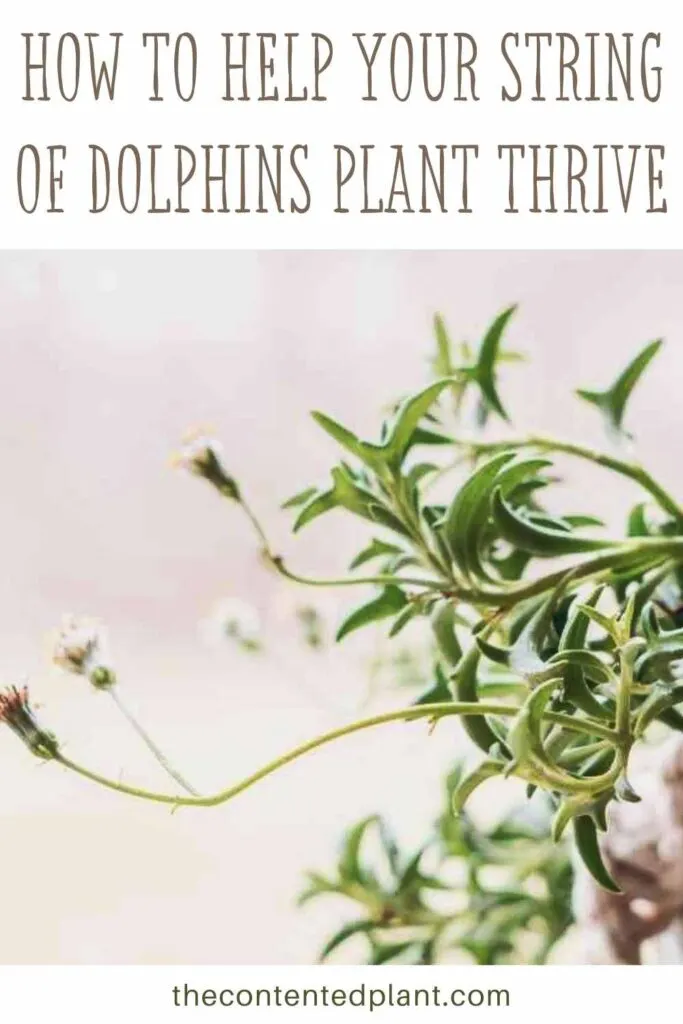String of dolphins is a cute, easy care succulent vine. Like the other string of things plants, it makes an eclectic and adorable indoor plant year round.
The Dolphin plant has lots of visual interest. The stylish leaves actually do look like dolphin pods flying over the seas. The leaves grow off trailing vines, curling and diving this way and that.
Yet, for all its nautical vibe, the dolphin plant is actually a succulent native to South America.
Is String of Dolphins an indoor plant? The String of Dolphins is a great indoor plant. It can be grown outdoors year round only in very warm climates with no winter temperatures below 50 Degrees F.
Indoors the dolphins makes a cute hanging basket. Or set it on a shelf and let it trail around.
It grows small white puff ball shaped flowers occasionally. They extend out on stems past the twisting green trailers and provide points of color.

How To Propagate String of Dolphins:
Can String of Dolphins be propagated by Seed? No, String of Dolphins is typically propagated through stem cuttings rather than seed. This is because the plant does not produce seeds readily and propagation through stem cuttings is an easier and more reliable method.
The Dolphin plant is propagated most easily by stem cuttings. These cuttings can be rooted into water, moist moss or soil.
Watch Kayti propagated her string of hearts. These methods will also work well for the dolphin plant.
Propagating a Dolphin Plant by Stem Cuttings:
To make a stem cutting, cut in between the leaf nodes on the stem of the plant.
For Soil Propagation
- Bury the stem in moist succulent soil up to the first leaf node. Do not bury the leaves.
- Keep the soil moist (not soaked) until the plant starts to put out new growth. This can take a month or so.
- Then immediately cut back on the water so you don’t rot the roots and stem.
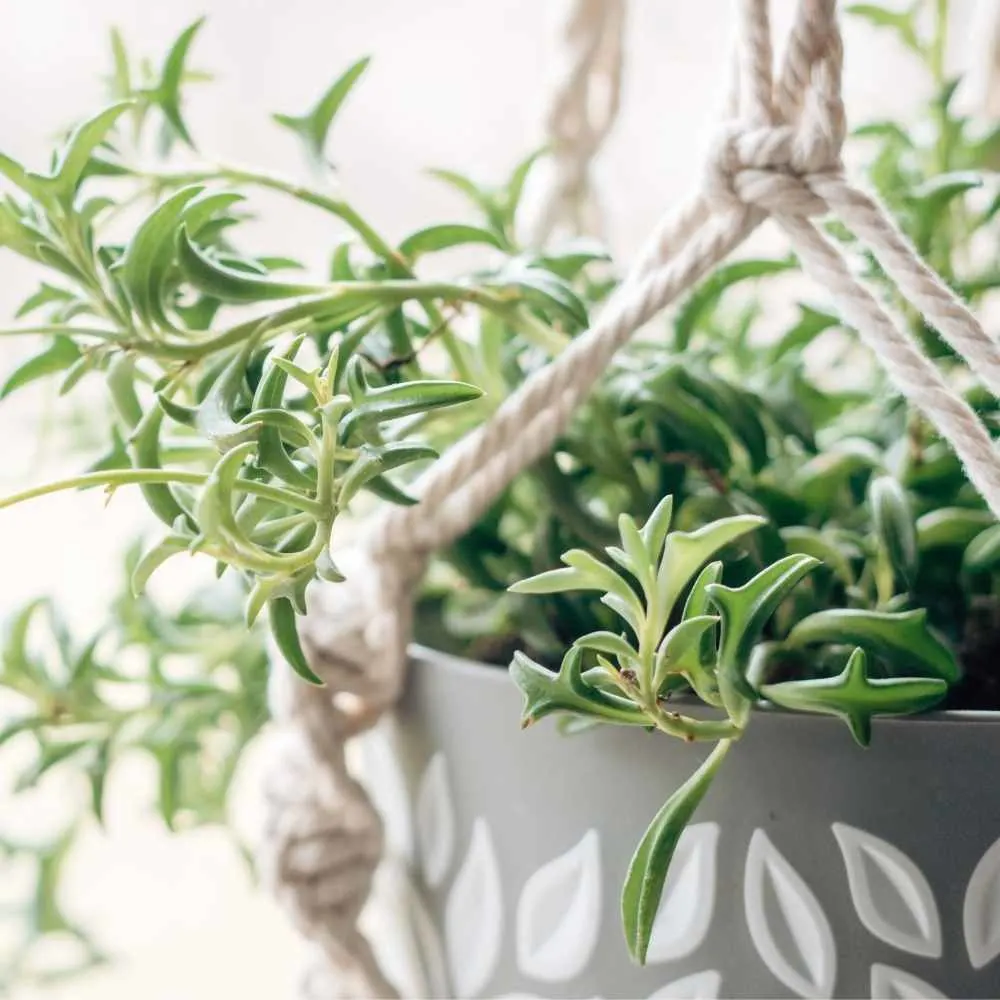
Propagating String of Dolphins in Water.
- Put the stem into a jar of water so the water just covers the stem up to the leaf. Don’t submerge a leaf, or the stem cutting is likely to rot.
- Change out the water every few days and keep the jar clean. This ensures no bad bacteria grow in the jar and ruin your cutting. And freshly oxygenated water is preferred.
- After several weeks roots will grow.
- When roots are an inch or so long plant them into a moist succulent soil mix.
- The plant will enjoy moist soil until it is well established in its new pot. Then treat it like the succulent it is and let it almost dry before watering.
Repotting String Of Dolphins:
Repotting String of Dolphins is a straightforward process. Here’s how to do it:
- Choose a new pot: Pick a pot that is one size larger than the current one and has good drainage holes.
- Prepare the soil: Mix together a well-draining succulent or cactus potting mix with some sand or perlite to improve drainage.
- Remove the plant from the old pot: Gently remove the plant from the old pot and loosen any tangled roots. You may need to insert a knife between the soil and pot if the plant is solidly stuck in the pot.
- Trim Roots As needed: If the roots are heavily matted, you can trim them back to encourage new growth.
- Place the plant in the new pot: Fill the bottom of the new pot with some of the prepared soil mix and place the plant on top. Add more soil mix around the plant, gently pressing it down to remove any air pockets.
- Water the plant: Water the plant thoroughly after repotting, but be careful not to over-water. Allow the soil to drain completely and avoid watering again until the top inch of soil has dried out.
You should only have to repot your String of Dolphins plant every other year or when roots come out the bottom of the pot. This plant does not mind being a bit root bound.
String of Dolphin Flowers:
Like the other string of things plants, the dolphin string plant will produce flowers. Dolphin strings produce small white flowers or yellow flowers. You won’t be overly wowed with the Dolphin flowers but they do produce a bright spot of interest. They are not particularly showy and are not the main attraction of the plant.
The flowers are usually produced in the summer and are very small, growing in clusters along the stems. If you prefer not to have flowers it’s ok to prune off the flower stem.
Once the flowers die off prune off the dead stem to clean up the look of the plant. These flowers do not produce seeds that are easy to harvest or use for propagation.
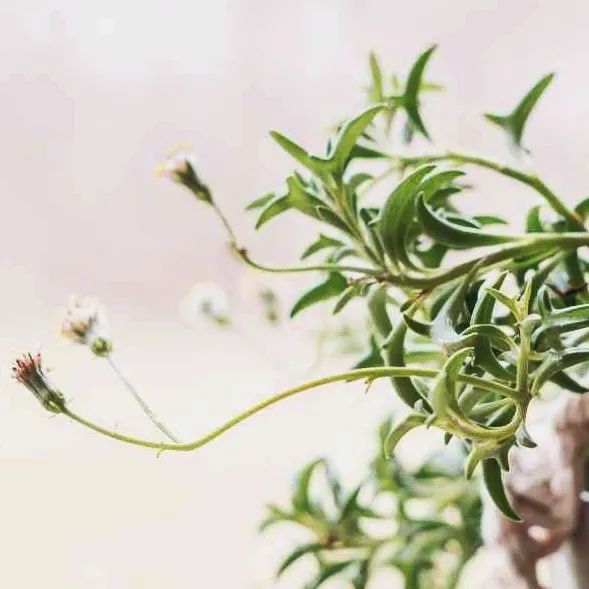
How to Prune String Of Dolphins:
String of thing Dolphin plants grow as trailers. They make great hanging baskets. Or you can allow them to trial from window sills, ledges and shelves. They will grow up a trellis if tied on but they cannot grip the trellis.
This vine trails to about three feet long if left alone. Prune dolphin plants by snipping off the strings to whatever length works best for the placement you chose for them.
How to make String of Dolphins Fuller:
The dolphin plant may look a bit thin and scraggly if not pruned.
To make a string of dolphin plant fuller, snip off the trailers and plant the cut end back into the pot with the mother plant. Keep the soil moist until the new starts begin to grow.
Snipping the stems will force them to grow two offshoot stems from the point of the cut. When you snip off the trailer, it will grow two rather than one stem from that cut.
If you plant more stems into the soil with the mother plant and allow the trailers to grow as doubles, you will have a fuller dolphin plant.
Where To buy String of Dolphins Plant:
Are String of Dolphins Rare? String of Dolphin plants are rather rare. You may have trouble sourcing this particular string of things plant.
Etsy shops do carry them if you cannot find a local garden shop that carries them.
How do You Take Care of Dolphin Strings?
Read our quick guide below to learn more about the care instructions and general information about the senecio string of dolphins. Then read our detailed printable plant care guide below for more on how to care for this plant, repotting string of dolphins, and how to protect it from pests.
| Familiar Names: | String of Dolphins, dolphin necklace, flying dolphins, dolphin plant |
| Scientific Name: | Senecio hippogriff |
| Plant Family: | Asteraceae |
| Care Difficulty: | Easy |
| Temperature: | 65 to 85 degrees F |
| Watering: | Soak with water when the soil is Dry. Soak Weekly in growing season. Soak Monthly when dormant. Allow to dry completely between waterings. Is your string of dolphins drying up? the soil is likely inconsistently watered or constantly overwatered. This will give your plant root rot which starves the plant since the roots are sick and dying. |
| Soil: | cactus or succulent soils are preferred. |
| Lighting: | String of Dolphins need 6 to 8 hours of bright indirect light |
| Growth: | String of Dolphin plant is a flowering succulent that grows as a trailing vine. |
How to Care For String of Dolphins:
Here is our complete printable care guide for this succulent string of things plant.
String of Dolphins Care guide
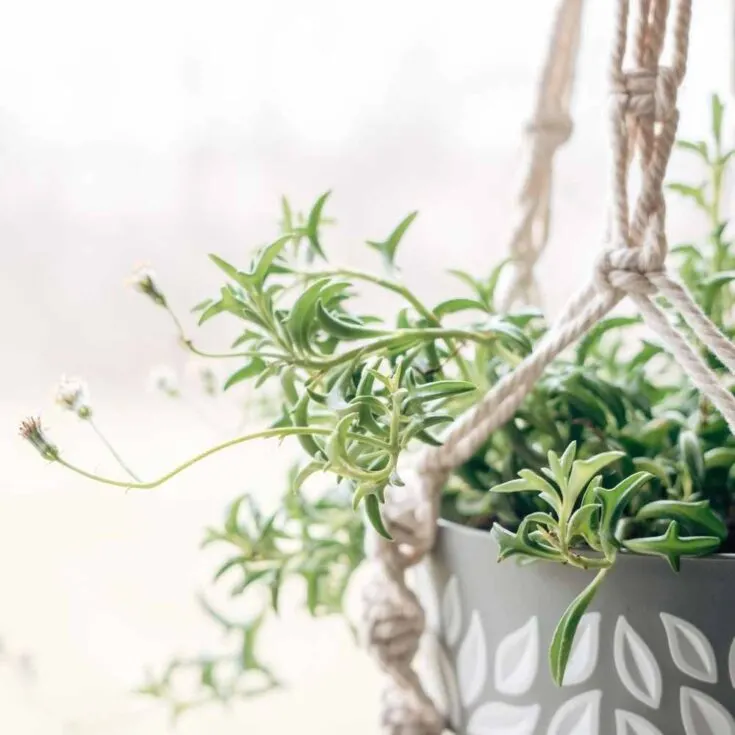
String of dolphins is a cute, easy care succulent vine. Like the other string of things plants, it makes an eclectic and adorable indoor plant year round. In warm months it will grow outdoors well.
Materials
Tools
Instructions
String Of Dolphin Soil:
- String of Dolphinplants prefer well draining succulent soil. The roots will rot quickly if they sit in heavy moist soil.
- Make sure your pot has drainage at the bottom. Do not use a pot with no drainage hole for this plant.
Pot Size and Type:
- The String of dolphins pots must HAVE GOOD DRAINAGE.
- I like to plant mine in ceramic pots with a drainage hole. Terra cotta pots are ideal since they wick extra liquids away from the roots.
- Unglazed ceramic pots are also good choices.
Repotting Tips:
- The roots are shallow and the dolphin is happy somewhat root bound. It can go two years between pottings. Look for roots coming out the drainage holes.
- You can put a well draining pot inside a non draining cover pot but set the drain pot on a bed of gravel and be sure there is no water accumulating in the cover pot.
- These plants do well in small pots that fit the root size.
- Potting in a too large planter can encourage root rot and other problems.
Lighting:
- The Dolphin plant grows best in 6 to 8 hours a day of bright indirect light.
- These pretty succulents enjoy growing near a well lit eastern or southern window, or nearby shelf.
- Make sure the String of Dolphins isn't sitting in constant hot direct sunlight, the leaves can burn and fall off.
- Sheer curtains make good light filters.
Watering:
- Read our String of Hearts Watering Guide for more information on how watering impacts the health of your string of things plant.
- Water your String plant when the soil is dry down to the root zone. These plants are typically drough resistant and can withstand longer periods of dryness compared to other houseplants.
- Watering is best done on a regular schedule so the plant is not over or under watered. Both can cause stress on the plant.
The recomendation for watering is every 2-3 weeks. Use a moisture meter to be sure the plant is dry or alomst dry in the roots. - In dormant winter months reduce watering to monthly or when the soil is dry.
- Never let this plant get wet feet. Overwatering causes yellowing leaves, root rot and attracts fungus gnats and molds to your plant.
- Keep humidifiers and plant misters away from these low humidity plants.
- Occasional showering to get the dust off is fine. But dry the leaves WELL afterward. Set it outside in warm air and let it dry that way if you can.
- Learn how to save the String of Dolphins from root rot in this post.
How to Fertilize the String of Dolphin Plant:
- Apply a light dose of good quality fertilizer monthly through Spring and summer.
- Decrease feedings by late Fall and allow the String of Dolphin plant to rest through the winter months.
Temperature:
- The Dolphin plant will do best in temperatures between 70-85 degrees Farenheit.
- If it is warm outside during the summer, you can put this plant outside. However, take care not to let the leaves get burned from constant direct sun.Light shade works best outdoors.
- The night temperatures must be over 60 degree F. for this plant to grow well. Never allow temperatures to fall below 50 degrees to avoid injuring the plant.
Pests:
- The String of Dolphin plant is a hardy resilient plant. However all plants can get attacked by pests.
- Stress by longterm inconsistent watering, poor light, extreme temperatures and soil conditions are contributors to plant stress..
- Spider mites, mealy bugs, scale, thrips and whitefly are the most common houseplant pests you will see.
- Read our post on The Seven Most Common Houseplant Pests and how to kill them to learn how to identify and control plant pests.
- To minimize the possibility of pests be sure to check all nursery plants before bringing them home.
- Quarantine all new plants until you are sure no pests live in them.
How to Propagate String of Dolphins:
- Propagation for the string of Dolphins is similar to the string of hearts plant. Be sure to read our post on How to Propagate the String Of Hearts for our complete propagation guide. And watch the video below to see Kayti propagate her string of hearts several ways. These methods also work well for the string of dolphin
- To propagate the Dolphin plant by Stem Cuttings.
Cut vine off the plant between the leaf node using sterile scissors.
Propagating string of dolphins in water:- Place vine stem cutting in water, cut side down
-Place near a window with bright indirect light
-After several weeks roots will grow
-Plant in soil when roots are 2-3 inches long
If you want to propagate the stem cutting in soil: cut off a hanging section from the vine.
Place the vine directly in moist soil and a new vine will evenutally grow.
Related Content:
Read More about String of Thing Plants in these posts.
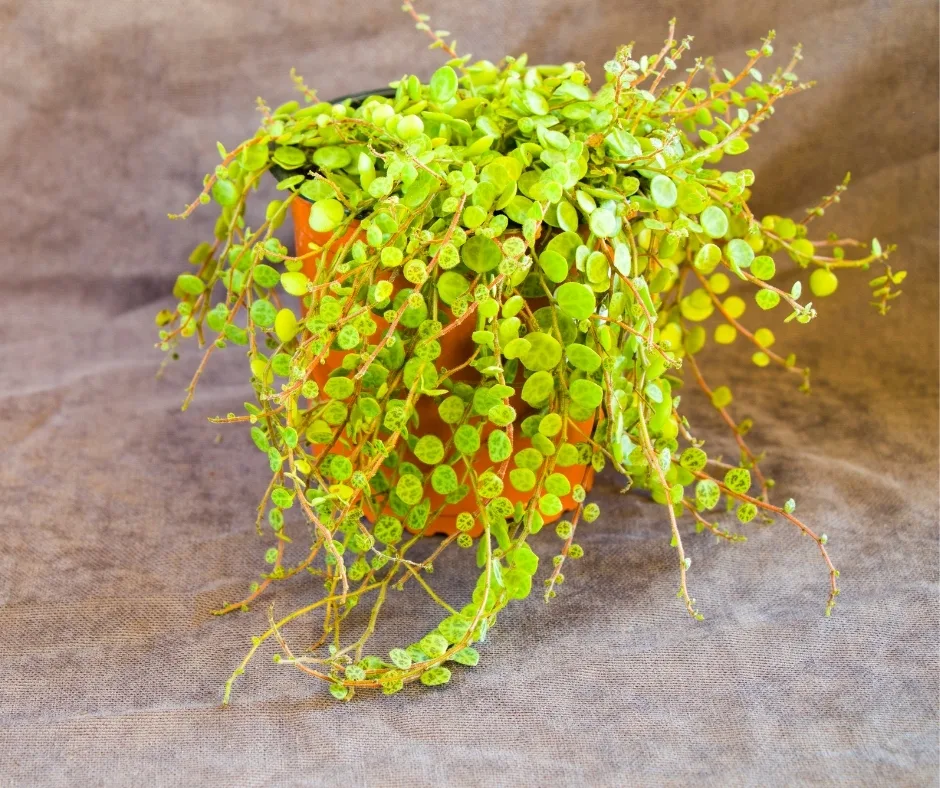
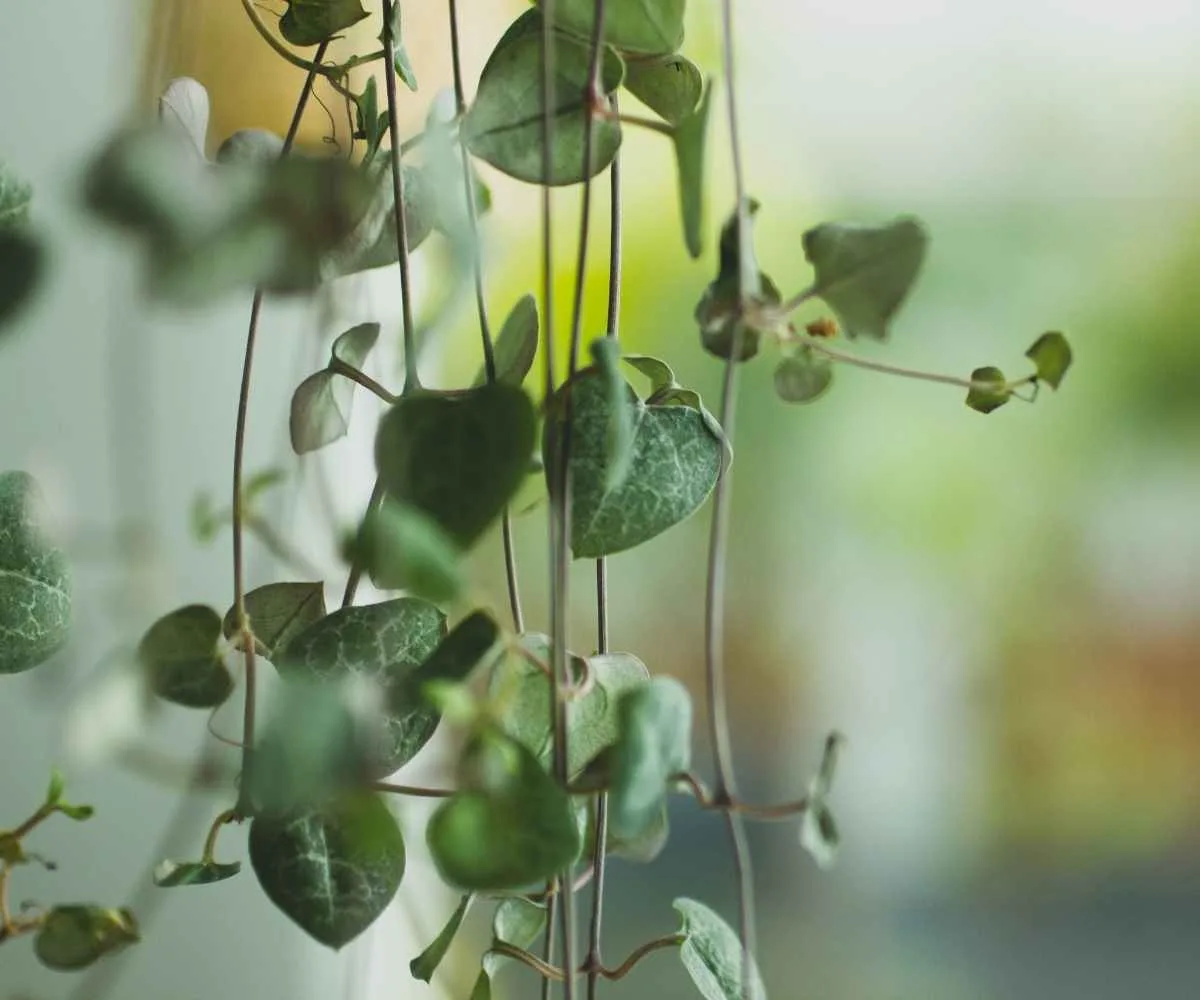
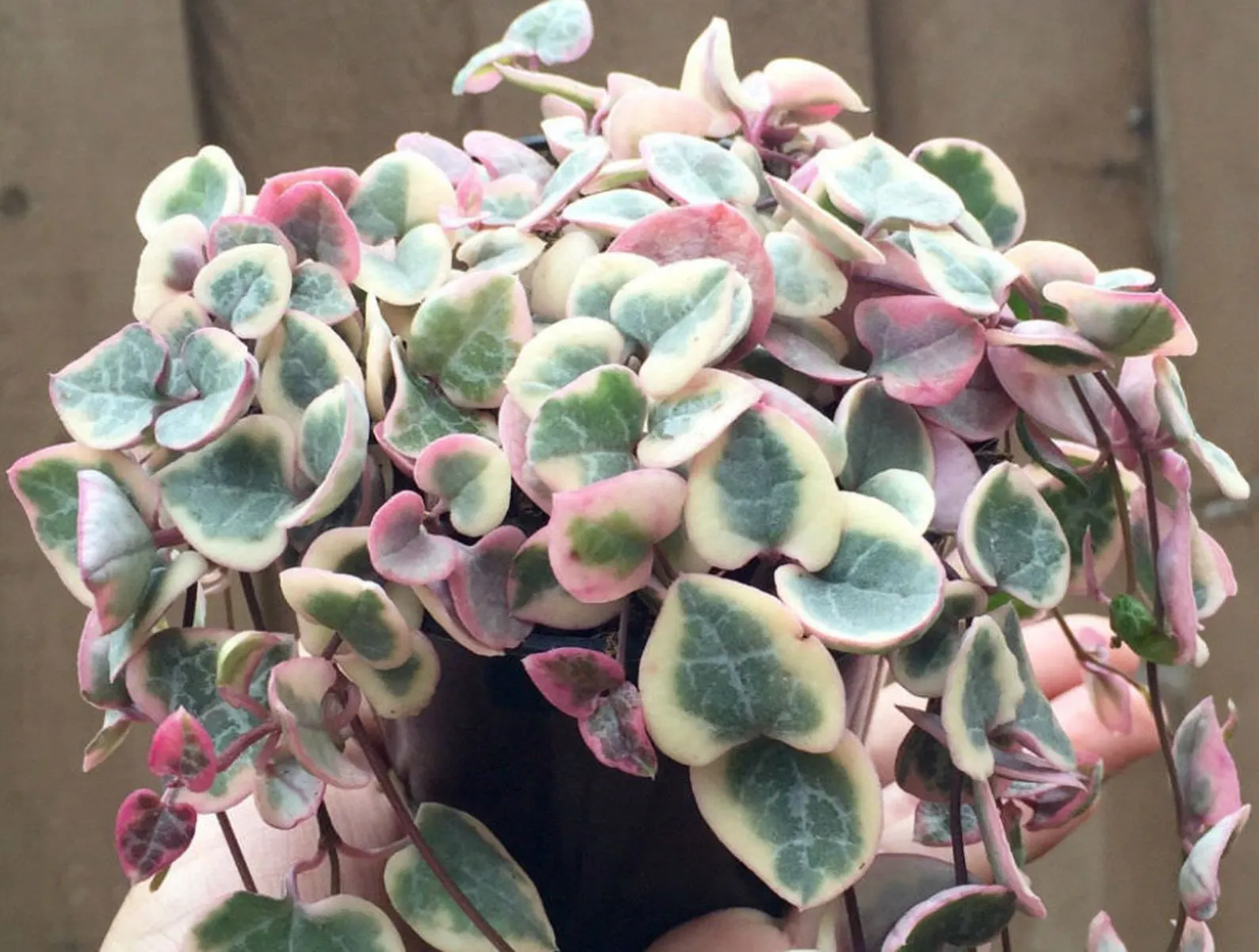
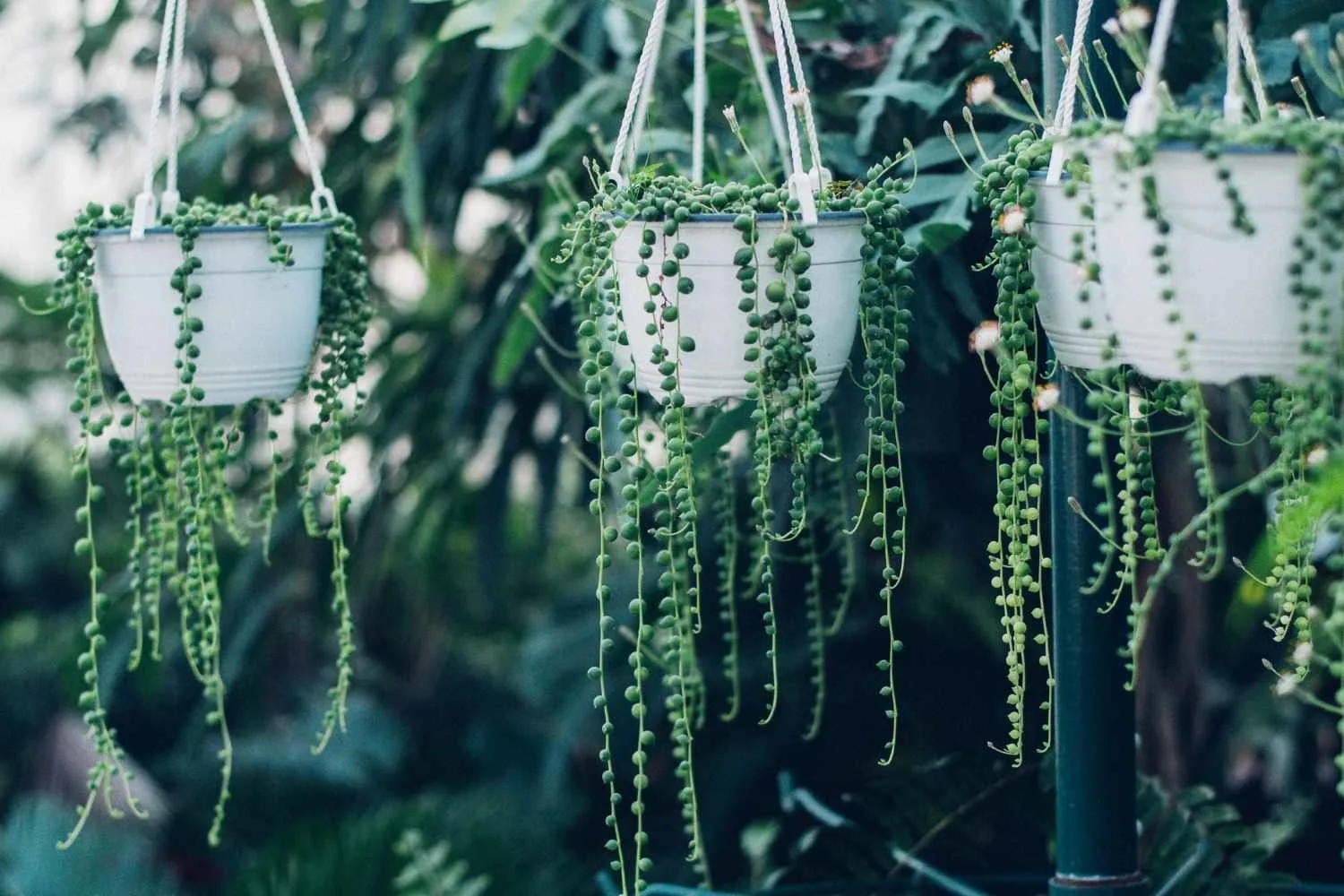
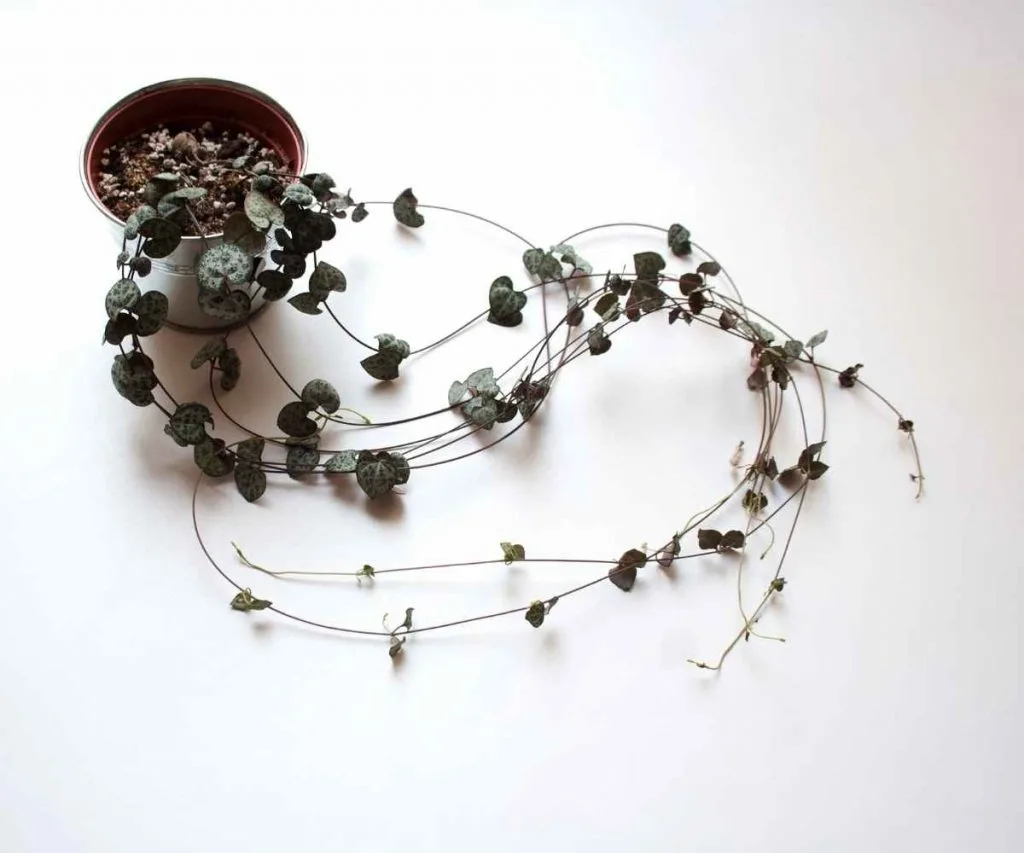
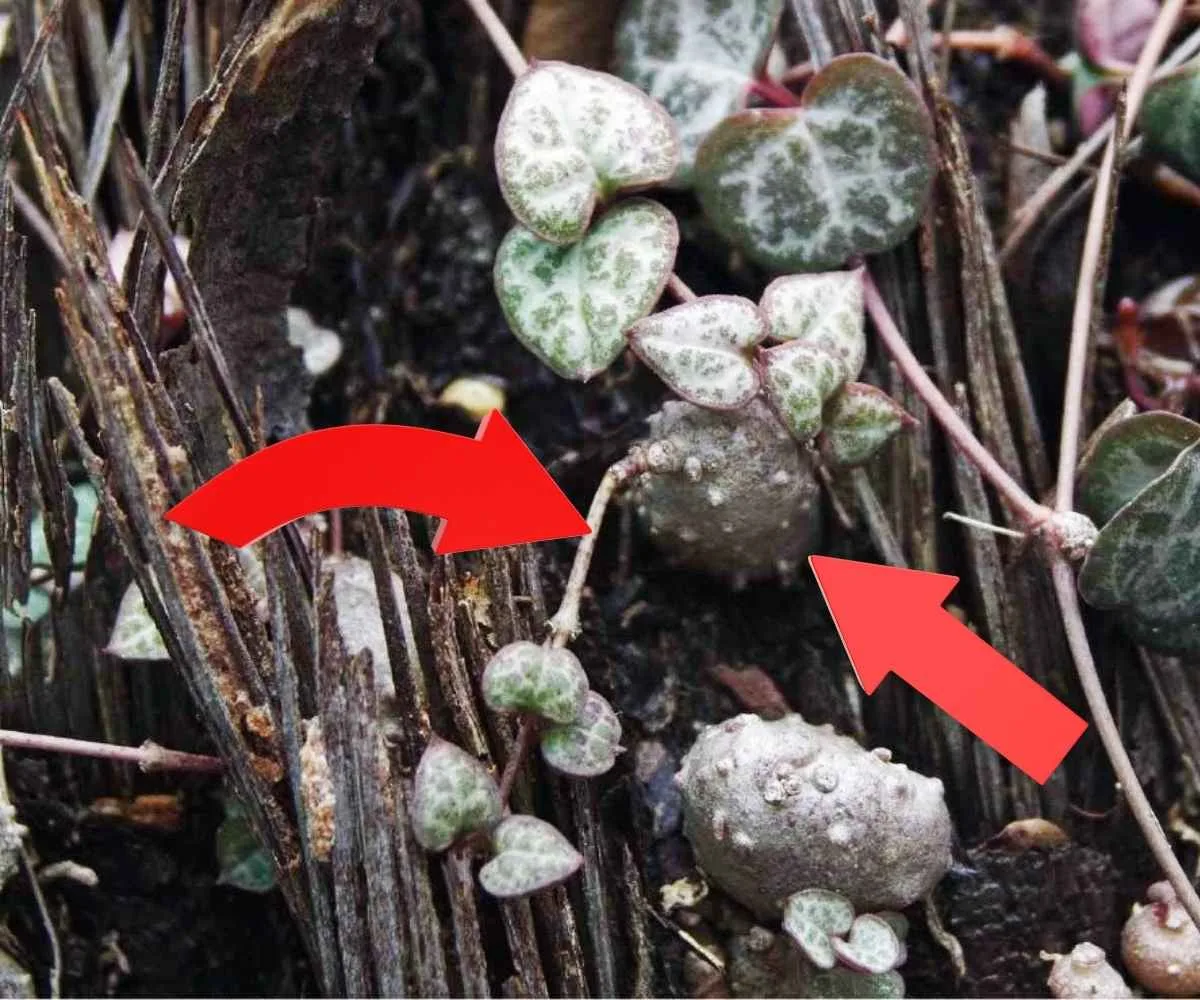
Recent Posts:
Follow Us:
Find us on YouTube, Instagram , Pinterest and TikTok! We love to Plant chat. We also comment, like and occasionally share your content to our daily stories. We’d love to see your plants. Share your joy in your houseplants. Happy Planting!
